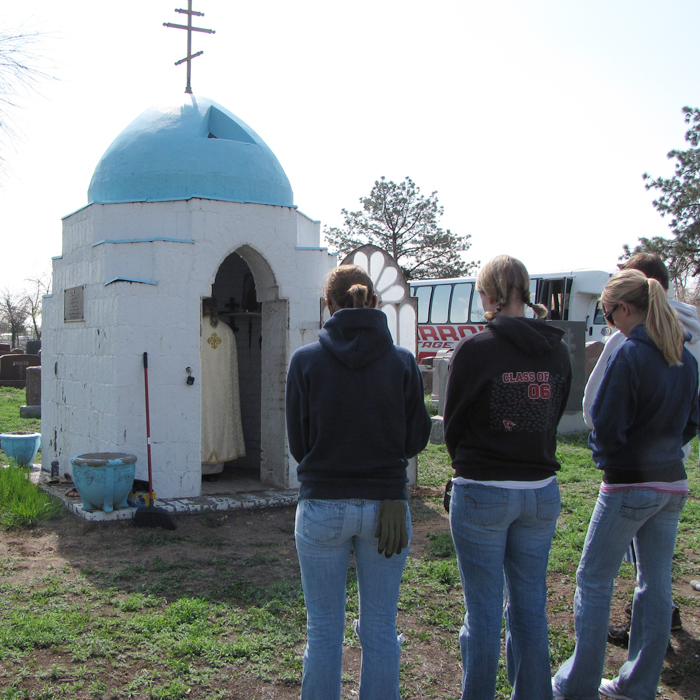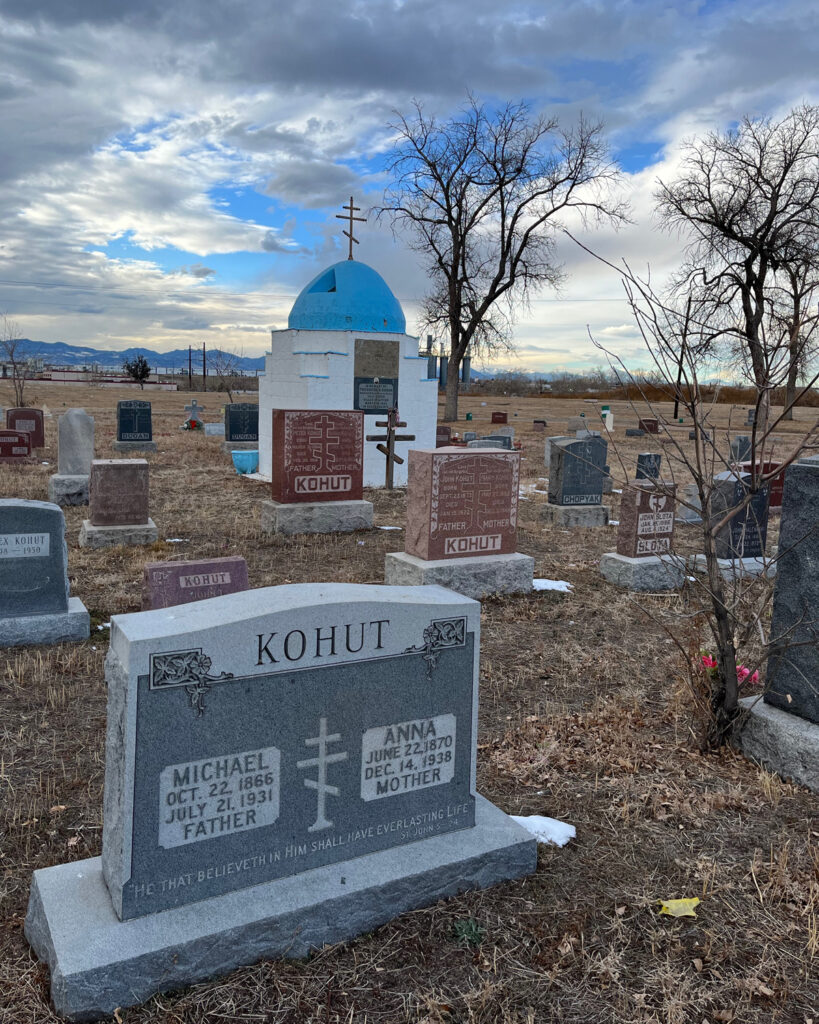By Mary Lou Egan

It was an omen. Mary Wysowatcky said she knew something was wrong, even before they got the official notice. A bird came into the house and flew all around the upper part of the ceiling and went out. Her son John used to light the chandelier in the church before services. It was an omen.
John Wysowatcky Jr. was born in Globeville in 1893, one of eight children of John Sr. and Mary Wysowatcky. He was handsome, active in the Orthodox Church and contributed to the family with his earnings from Swift & Company. When the United States entered World War I in April 1917, he enlisted in the Army.
Wysowatcky served with the American Expeditionary Forces, and was killed in the Argonne Forest on Oct. 23, 1918, three weeks before the Armistice.
His death was a great loss to the Globeville community and to the Russian Orthodox congregation. When his body was returned in October 1921, he was interred in Block 19 of Riverside Cemetery.

Established along the South Platte River in 1876, Riverside Cemetery is the resting place of many significant Colorado pioneers: territorial governors John Evans and John Long Routt; former slaves Clara Brown and Barney Ford; Augusta Tabor; Silas Soule; 1,200 Civil War veterans; and three Medal of Honor recipients.
But the St. Michael’s plot in Block 19 has a distinctive personality that reflects its deceased residents: members of Holy Transfiguration of Christ Orthodox Cathedral in Globeville. Many memorials have inscriptions written in Cyrillic or Russian; there are gold onion domes on top of monuments and the distinctive three-bar Orthodox cross.
Holy Transfiguration was founded in 1898 by Slavic immigrants from homelands that were annexed by Austria-Hungary, Russia or Germany. They were Czechs, Slovaks, Bohemians, Carpatho-Rusyns, Ukranians and Ruthenians. If their origins sounded exotic, their circumstances were desperate.
They were required to serve in the armies of nations that had conquered and oppressed them. And they were starving. Their small farms wouldn’t sustain large families. And so they fled, taking gritty jobs in industrial towns, working 12-hour days for meager wages. They settled near each other in the Globeville neighborhood, and they’re buried alongside each other in Block 19.

In 1922, a small chapel was erected in the St. Michael’s Plot in remembrance of John Wysowatcky Jr. Each year, a Requiem Mass is held in this tiny building on the first Sunday after Orthodox Easter, known as St. Thomas Sunday, for deceased members of the parish. Another service is celebrated there on Memorial Day.
Riverside Cemetery is a gem and a marvelous place to visit. You’ll want to stop by the Orthodox section. Just look for the Orthodox symbols on the memorials and the blue-domed St. Michael’s Chapel.
Mary Lou Egan is a fourth-generation Coloradan who loves history. You can reach her at maryloudesign@comcast.net.

Be the first to comment